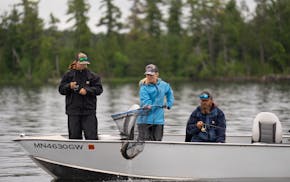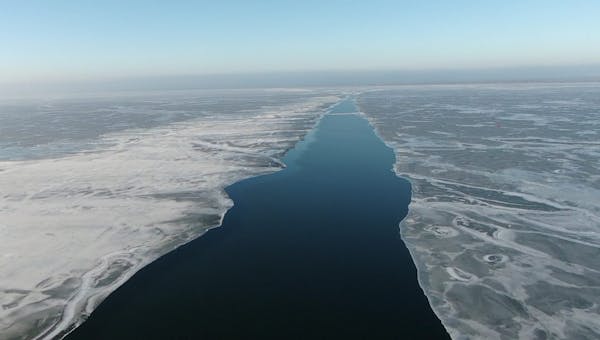If it's a new year, the Department of Natural Resources must soon be offering its annual roundtable, and indeed it is, the date of which is Jan. 19, a Friday.
This year's affair will feature about 400 invitees, some of whom will come to impart information, others to digest it and others still to hang out and enjoy the free breakfast, lunch and cookies.
Whether the roundtable, an agenda of which is attached to the online version of this column, is a good use of about $60,000 of taxpayer funds depends on one's perspective and desired outcomes.
Over quite a few years, I have written critically about this shindig, believing not that the meeting of about 75 DNR personnel with 300 or so conservation leaders and others is a waste of time, but rather a waste of opportunity.
My world view — admittedly, not shared by everyone — is that the state's conservation and environmental challenges are so significant and so overwhelming in number and scope that a once-a-year meetup of DNR fish, wildlife and other pros with a smattering of the citizenry should be laser-focused on our most important resource problems and how to solve them. Or try to.
By disposition, I am also biased toward action, rather than discussion, which too often waffles endlessly toward no good end. As the economist and diplomat John Kenneth Galbraith once said, "Meetings are indispensable if you don't want to do anything."
Consider: Dating to early last century, all, or nearly all, major Minnesota conservation initiatives, from preserving the boundary waters to saving the state's wetlands and forests, were sparked and often executed by individuals or small groups outside of government.
If this is true, and if it's also true that in the intervening decades, the state's fish, wildlife, air, water and other conservation "challenges" — some might say calamities — have only grown more profound and problematic, a useful action by government might be to mimic successful conservation executions of the past in order to replicate, to the degree possible, their outcomes.
A digression here.
DNR staff generally are highly qualified and share the same, or higher, conservation ideals as any Minnesotan. Given the opportunity, they will do the right thing, a fact especially true at the field level, where hands get dirty and enhancements to fish, wildlife, water and land occur regularly.
That said, the DNR as a whole, not unlike other large institutions, public and private, can be — perhaps more accurately, often is — hidebound, risk averse and keenly aware that among its constituencies are not only resource conservationists, but also resource exploiters — many of whom, among the latter, are well connected politically.
So it has been that, throughout the decadeslong history of its roundtables, the DNR has organized fairly milquetoast January get-togethers.
This year's will be another example.
Mining near the BWCA? That's a pretty big issue that won't be discussed Jan. 19. Disappearing deer in the northeast? No. Homeowners' wells poisoned by farm chemicals ... the continued push to reduce statewide walleye limits from six to four ... logging on state wildlife management areas? Non, nein and no puedo.
True, some important topics, including the DNR's new invasive carp management plan, are on the Jan. 19 agenda. But as with other subjects to be discussed — except for an opening session on climate change — only 45 minutes are allotted for explanation and questioning of a complicated and controversial document that took nearly a year to develop.
Yet perhaps I've been mistaken these many years believing that a solution-oriented roundtable has merit.
Perhaps, as DNR Fish and Wildlife Division Director Dave Olfelt and Katie Smith, director of the Division of Ecological and Water Resources, told me this week, the DNR organizes roundtables not to propose or develop answers to conservation problems, but to facilitate "conversations, refresh relationships and meet new people."
Had I known that in 2011, I wouldn't have been such a smart aleck about that year's roundtable:
"Do we really need, for example, another 'overview' of what's happening with ducks, pheasants, grouse, deer or any other species?" I wrote. "No, we don't. And not just because, as is common at the Roundtable, the overviews are so vague as to be ... unuseful."
Even more cryptic in 2008, I penned this about that year's roundtable.
"Why doesn't Minnesota enjoy the natural resources stewardship it and its citizens deserve? Because its conservation delivery system is broken. The DNR is part of the problem, as its all-too-brief annual roundtables that focus too often on topics that are about 20 degrees off kilter remind us.
"The bigger problem — look in the mirror, folks — is the agency's constituents, many of whom will be [at the roundtable]. Comprised substantially of wildlife and environmental group advocates, this bunch must settle each January for small talk about some Really Important Topics.
"But settle they will, and seemingly happily. Now these many meetings later, they know little will come of it anyway."
The hope here is that in 2024, we, all of us, are less inclined to settle for small talk about big conservation problems.
The important discussion we should be having, not only at the DNR roundtable but around dinner tables from Winona to Warroad, Worthington to Windom, is what we want Minnesota to look like in 10, 15 and 25 years.
Do we want mining near the Boundary Waters Canoe Area Wilderness? Well-managed forests? Clean drinking water? Balanced farmlands that not only provide incomes for farmers, but also habitat for wildlife and clean lakes for fishing and swimming?
Such decisions won't be easily achieved. But they will be necessary, followed by action, and lots of it.
Or, we could just keep doing what we're doing, refreshing relationships and meeting new people.

Anderson: In early June, Minnesota fish are begging to be caught. Won't you help?

Anderson: Tails wagging, DNR officers' dogs find lost people and missing evidence
Anderson: Punish poachers more
Anderson: The Chainsaw Sisters Saloon is gone, but the Echo Trail is still a pathway to possibilities



